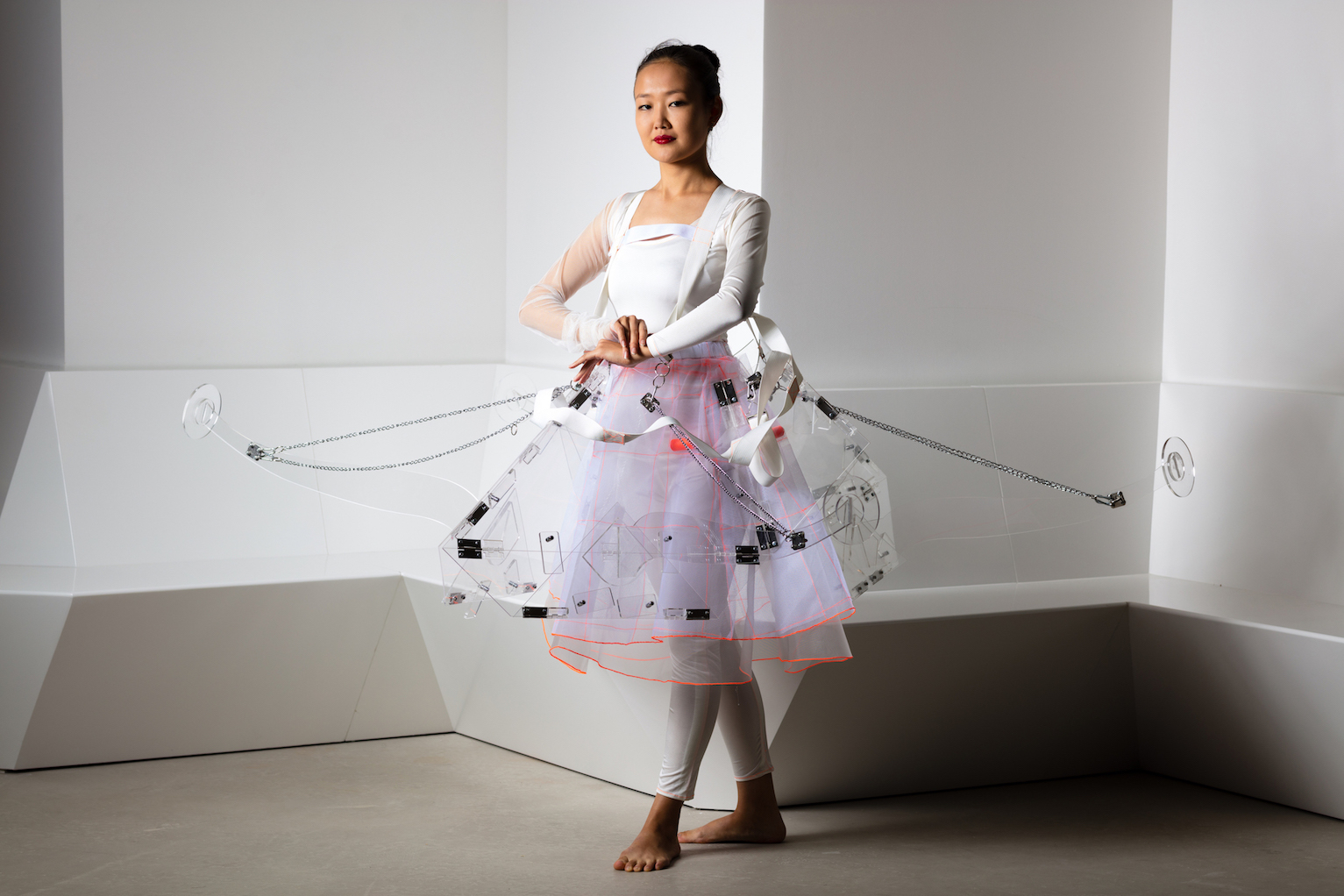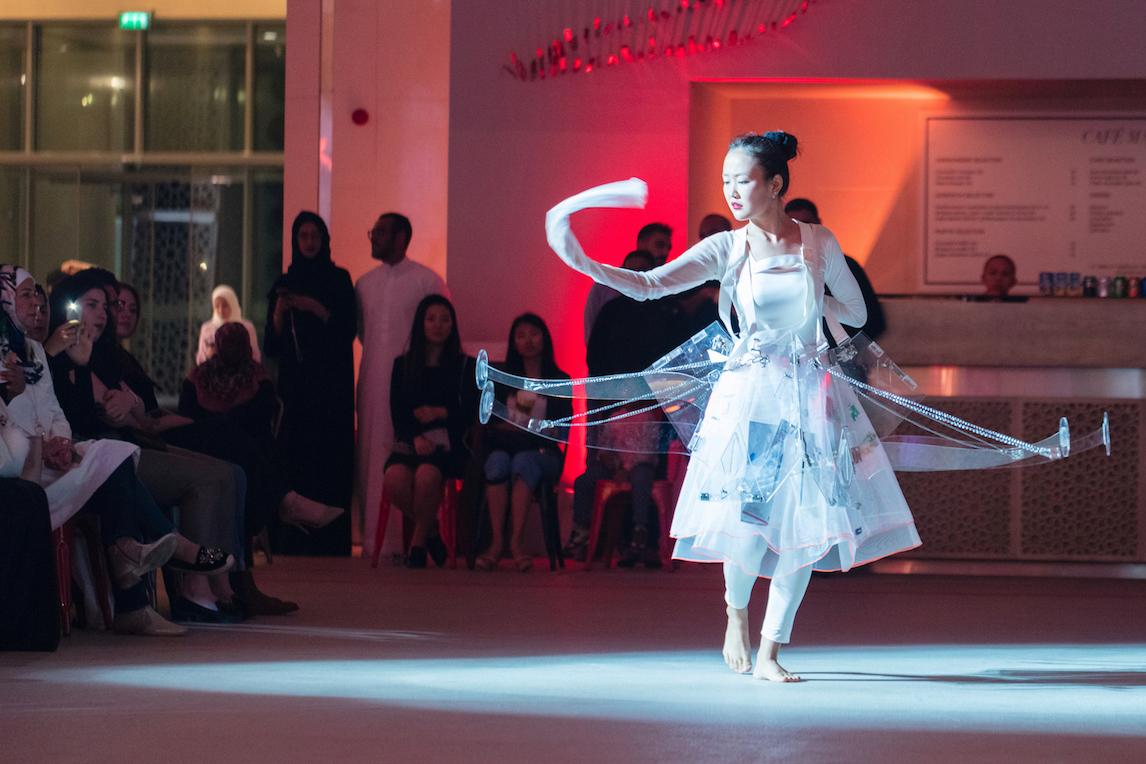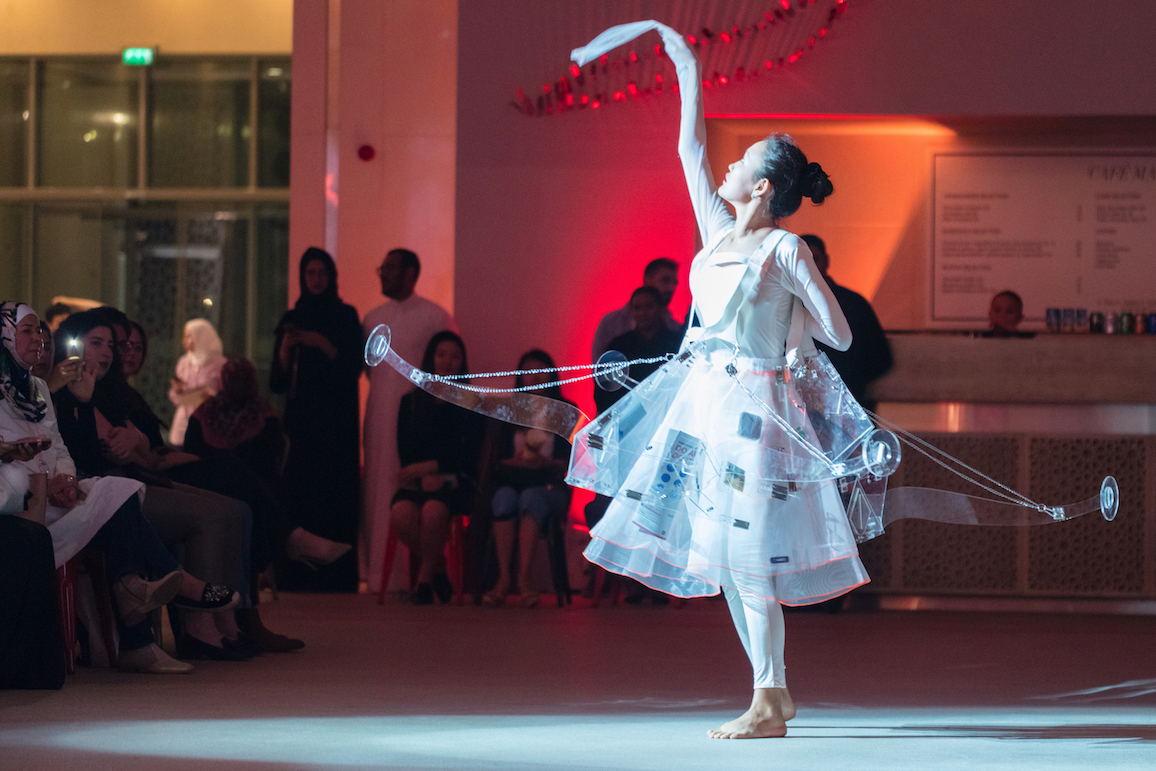Meet Ayesha Hadhir
The artist watching the performance piece at Guggenheim Abu Dhabi. 2017. Courtesy of Zayed College of Arts and Creative Enterprises. Photo by Matthew Dols
As part of our first "Artwork of the Week" spotlight, meet Ayesha, a recent graduate of Zayed University in Abu Dhabi. Her studio space includes the deep waters of Abu Dhabi (yes, she dives as part of her practice!) while also threading her memories and reviving her passions for fashion design with her arts practice. Ayesha shares a few words on her childhood and techniques:



Featured artwork:
Collectable Table, 2017, Plexiglas, sheer fabric, 701 thread.
Can you explain to us the meaning behind this piece?
I created the Collectable Table for "The Creative Act: Performance, Process, Presence" exhibition at the Guggenheim Abu Dhabi. I appropriated the work of the 3 Iranian artists Ramin Haerizadeh, Rokni Haerizadeh and Hesam Rahmanian, whose work is driven by Fluxus movements to create the Collectable Table. This is a wearable art piece that is both sculptural and performative. The piece is only complete once it's performed and interacted with the audience. It is a foldable table and unfolds by the end of the performance and also displays the items collected from the audience. This work was a life changing experience as I started off at a young age wanting to be a fashion designer and then growing up as an artist. It was the perfect opportunity to combine both. It opened up new form of art to explore for my art practice.
What type of art do you generally do?
I mostly enjoy making large-scale instillations where people can interact with the work and take with them a memory from a piece of art. I enjoy creating works in large scale and interactive because it's how I enjoy looking at art. I love to feel physically small between a large scaled artwork. This is how I feel the works communicate with me; It feels bigger than what my hands can create.
What was your earliest experience with thread?
My earliest experience with thread can go back when I wanted to be a fashion designer at 15 and I used to sew my own dresses. Years later when I decided I wanted to study art as my undergrad, I realized the thread became the core of my projects. I continued wanting to highlight the importance of a stitch in one specific colored thread. I was obsessed with color #701; the bright orange neon color thread, that I’ve been using for 5 years now continually.
How do you incorporate your family history into your work?
It's one of the main themes I address in my work; I always include them in my subconscious when making art. I feel including my family history in my work is what connects me with my ancestors. Mostly, I work around the theme of sea and underwater. The sea is part of myself and my family's heritage. I come from a family of fisherman and I am so proud to be part of this and that's how I try to emphasis and exaggerate the importance of such tradition for me and my brothers.
What’s your strongest childhood memory?
My strongest childhood memory that I enjoy going back to is when my mom used to design my Eid dresses on tissue paper. She sketches them out so she won't forget her designs and then took me to tailors to make her dream dresses come true. I always felt so proud to see and wear my mom's creations. I almost feel it’s where I get my fashion skills.
What current research are you doing?
My current research is focused manly on underwater instillations. I am working with something that takes months to progress by nature. It's very exciting but the anticipation is hard sometimes because you have to trust nature to take its course. I have been documenting this one shipwreck that was part of my childhood---the monument of Al Dabiya. This is a small island in Abu Dhabi where people have beach houses for vacations, and slowly its been sinking underwater that you can barley see any of it now. It feels sad that such sculpture couldn’t survive the salty water and eventually it has broken apart.
What’s a dream project for you?
My dream project would be making a public art instillation that can be permanent and monumental for the UAE. Long after I’m gone the instillation will survive! There is so much I can learn in the technicalities of making such work, since it has to survive the weather conditions and should have a longer lifespan than humans.


